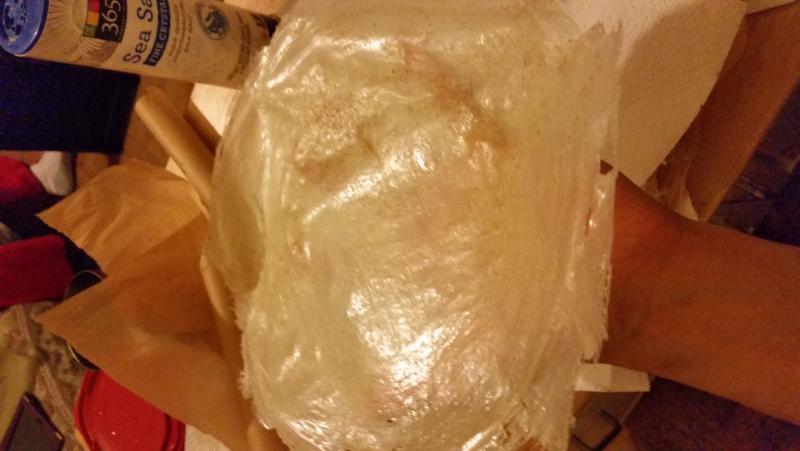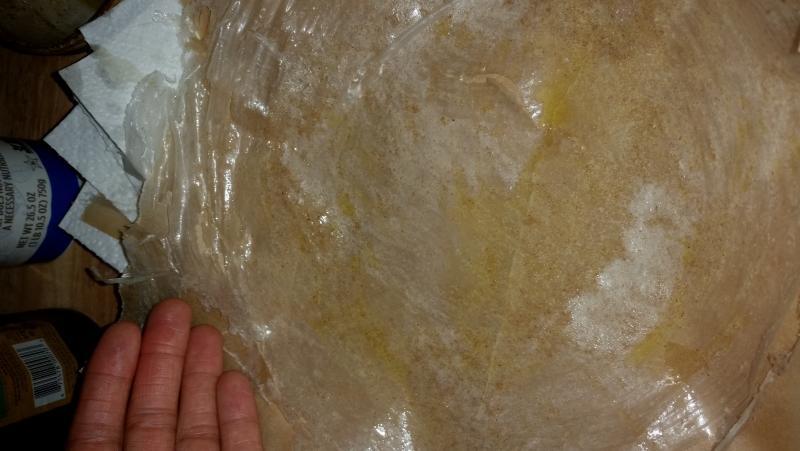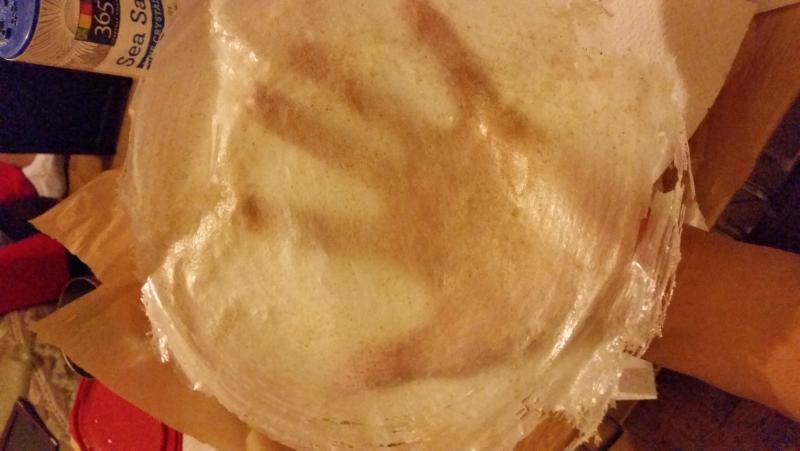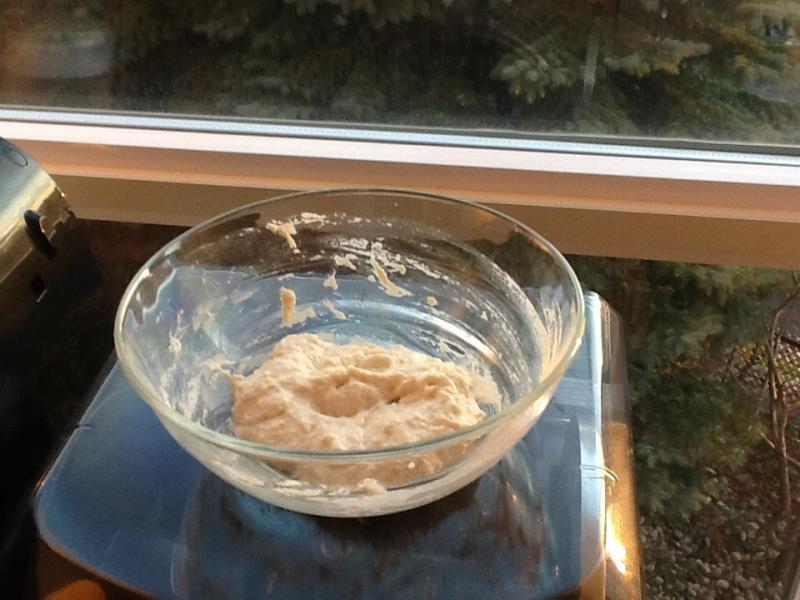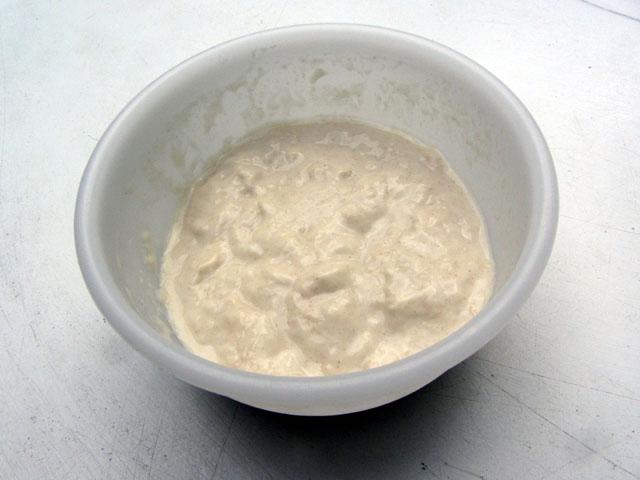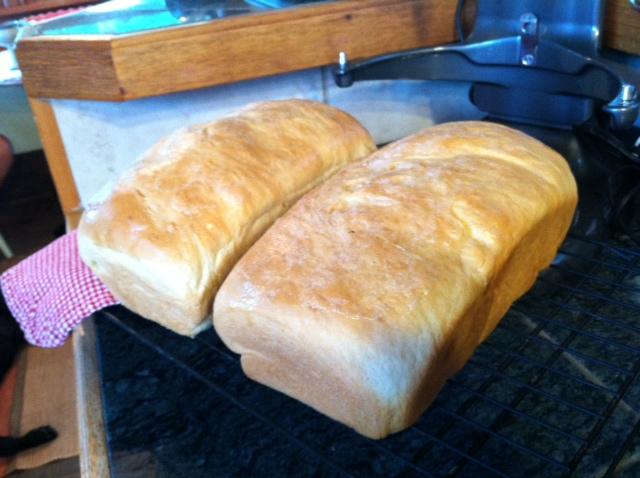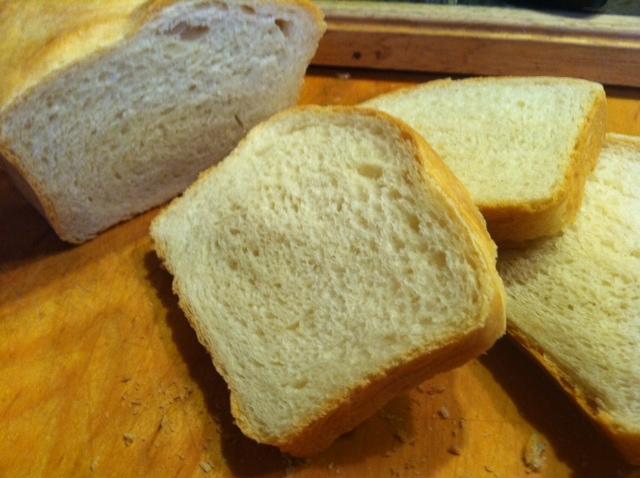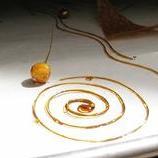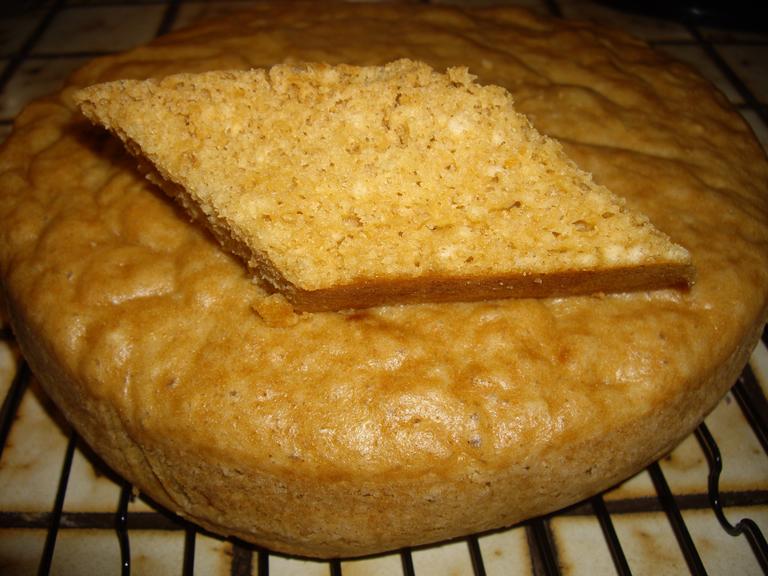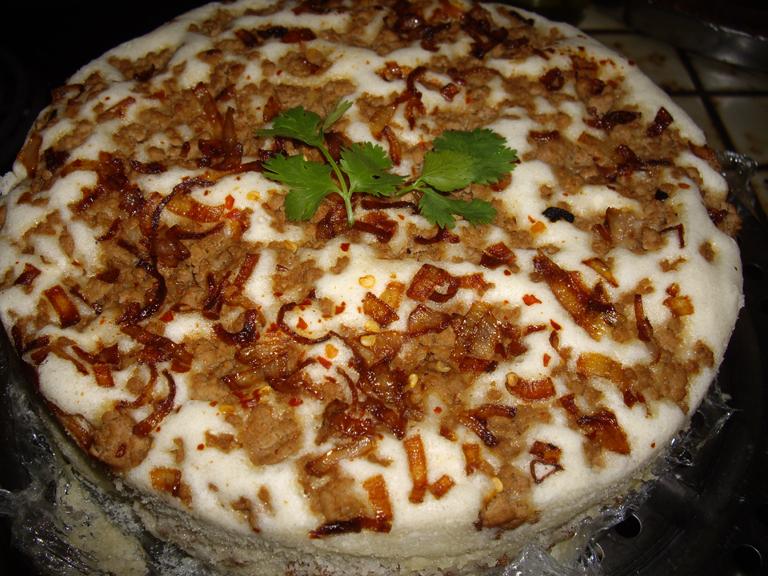Search the Community
Showing results for tags 'Bread'.
-
Hello there, I need a book that will teach me the secret science behind baking and free me from recipes. I am developing a blog that will focus a lot on baking. I will be developing my own recipes so I need guidance on the science behind baking. I have read "Ratio" by Michael Ruhmlman and even though it is great I find it somewhat incomplete. In the section of cakes, for instance, he addresses the ratio (1:1:1), the methods (creaming and foaming), and he gives wonderful variations for the basic recipe. He doesn't, however, address the issue of adding cocoa powder to the batter. Cocoa powder, in my view, is not merely a flavoring, it has the potential to interfere with the balance of a cake. If I add cocoa powder, do I decrease the amount of flour? If I decrease the flour amount, should I also decrease the sugar amount? "Ratio" also left some questions unanswered in the cookie section. Ruhlman gives the basic 1,2,3 ratio, but he doesn't really address that some cookies, for instance, have eggs in them. He doesn't address the role each ingredient has. What makes a cookie crumbly or crunchy? What makes it gooey? What makes it soft and cakey? I know that flour and eggs give structure to baked goods, and sugar and fat give it tenderness. But I need a book that addresses in depth the role of each ingredient, along with its percentage.Is there such a book in the market? I understand that no single book might address all the questions I have, but what books would be a good starting point for me?
-
Hello everyone, I made warqa dough for the first time today, following a recipe from Paula Wolfert's The Food of Morocco cookbook. It was surprisingly easy to make, however, i am concerned that this pastry is way too fragile to use. Im not sure if i did something wrong. The leaves are very delicate, especially around the edges. Some of them have rips in the centers. I brushed each with olive oil and layered them according to instructions and popped them into a bag. I was planning on making Paula's seafood bastilla in a couple of days but i think i might end up using filo dough. Has anyone made homemade warqa? Have you used it for any recipes such as bastilla? Is yours soft or crispyish? The leaves came out more like a spring roll consistency then a filoish consistency. Please help. Im curious of other peoples experience with this.
-
Host's note: this topic was split from the topic Baking Bread from Scratch in France. Allrighty then, I thought I would give this a go. This is what it looks like and I will cover this with a paper towel and see what happens. It is in a west facing window. Not sure what to do with it exactly if it works, but I will deal with that when (if) the time comes.
-
There’s a persistent myth that good bread is the norm in France. It is a myth which is why I bring my starter with me when we come on holiday from Wales. I’m definitely becoming a grumpy old sod. I was so annoyed by a stupid article in The Guardian newspaper just before we came away a few days ago - http://www.theguardian.com/lifeandstyle/shortcuts/2014/sep/03/who-will-babysit-my-sourdough-starter - that I thought, for the first time in about 15 years I’m not even going to take my starter, I’ll start from scratch and if I can’t get a starter going, it’s store-bought bread for the duration. Anyway, the four days since we arrived here on Saturday have been so perfect that we are probably never going back home to Wales. So I thought I’d better have a go with the starter. Monday evening I mixed two tablespoons of flour (organic T65 from the supermarket) with enough water to make a stirable paste in a little plastic pot and covered it with a piece of kitchen towel. If you are going to try this, please note that little of the foregoing is relevant – the amount of flour, the type of flour, the fact that it’s French, the type of container, the cover. You just need to make a paste of flour and water and it will either start to ferment or it won’t. If it won’t, you start again. You only have to do this once in your life so the odd false start is not a big deal. This is how it looked after mixing on Monday evening – doesn’t tell you much but I thought you might feel reassured by its ordinariness. Watch this space. I’m going to look pretty stupid if this doesn’t work. Mick
- 61 replies
-
- 10
-

-
Host's note: this topic is continued from The Bread Topic (2009 - 2014) I made white bread from from The Bread Baker's Apprentice by Peter Reinhart. I used variation #1. Best white bread I've ever made.
-
At my restaurant we make everything from scratch (even cheeses, cured meats, pickles...) except bread. Which is ironic since my start here on eG was primarily pastry and its still my passion. But I just haven't had the capacity to make bread for the restaurant until now.I bought a commercial convection, 2 tray full-sheet oven, and I think that will allow me the space to make enough to feed my customers. The bread is for my lunches only not dinners. Lunches are basic café fare - soup, salad and sandwiches. So obviously we're looking at the sandwiches. The bread needs to cross the lines between roasted turkey to sloppy chicken molé. I like my sandwich breads to be soft enough to easily bite and chew (sourdough is out). I would like the bread to be versatile enough that I could add herbs or cheese to specialize for various sandwiches. It needs to be sturdy but not so much bread in our carb conscious world. I like focacias but they're a bit too rustic for my place Previously I have used a bought ciabatta but they were too tough for many of my customers. Currently I am using a bought brioche bun which is too bready and so I'm seeing a lot come back to the trash. I've only used individual rolls/buns to this point but have considered sandwich bread, although that is a bit too rustic for us...but not if its good enough. I think the ideal bread would be somewhat flat but a bit of sponge, have a little bite, but not too much chew (if that even makes sense). Any thoughts. Maybe there's a cool ethnic bread that I haven't considered, or you have a favorite that seems to fit the bill.
-
The team over at Modernist Cuisine announced today that their next project will be an in-depth exploration of bread. I personally am very excited about this, I had been hoping their next project would be in the baking and pastry realm. Additionally, Francisco Migoya will be head chef and Peter Reinhart will assignments editor for this project which is expected to be a multi-volume affair.
-
Hello All, What is the best way to store sandwich bread, made following Rose Beranbaum's recipe? Storage time no more than 7 days. Thanks in advance, Nelson87
-
Looks like a fair number of us have been wooed by Ken Forkish's wonderful new book! The bread thread is full of his loaves lately. I thought the book needed a thread of it's own so we could discuss some of the finer points of the various recipes - work arounds we have come up with - and just to generally praise (and of course critique) the tome. I haven't had a failed loaf from the book so far - but I do find myself trying to make some adjustments to suit my schedule and have had great success with that so far. The levain takes 5 days to make - I was fortunate as Anna N made it and I just inherited 300 grams that I have been keeping alive since. I've discovered that feeding 50 grams of levain with half as much flour and water as called for gives me enough to work with on any given day and it doesn't seem to suffer. And it appeals to my thriftiness as I don't like throwing out large quantities each day. Today I'm working on 2 loaves of pain de campagne - a request from one of the nurses who got all misty eyed when she tasted the loaf I brought last week. She said it tasted just like the bread she likes at home in Europe. High praise indeed I thought. I fiddled this recipe a bit - again to fit my schedule. I mixed the ferment last night, gave it 4 turns over about 90 minutes then popped it into the fridge until this morning. I let it warm for an hour or so - shaped my loaves then let them sit until they responded to poking as they should. Took about 3 hours. They are baking now - and look just like they should.
-
So excited that our Seattle Seahawks are in the Super Bowl this year! What are people making? Any Seahawk fans planning a Seattle-inspired menu? One that doesn't involve any last minute cooking? I'm making sourdough bread and bacon/onion jam to go with someone's beef tenderloin. To bring in some Seattle touches, we'll have smoked salmon, a Northwest berry cobbler. And as a nod to Seahawk colors: blue corn chips and guacamole. There'll be IPAs of course (Seattle's a very hopped up city)but I'm also trying to come up with a clever cocktail - or hawktail (I've thought of making blue rock candy to use as a sugar rim on a sage margarita).
-
Every year I like to grab a baking cookbook or two for the house baker/my wife. What are some of the best options out there for 2013? Any eagerly anticipated gems arriving for the end-of-year blitz?
-
I'm no kind of pastry chef or even a particularly keen pastry eater. (I tend towards the savoury rather than the sweet.), but I thought this article by the BBC would be interesting to all the eG pastry chefs. http://www.bbc.co.uk/news/world-europe-24609525. Nice to see innovation.
-
Hi everyone, Its been several years since I've posted on this forum but hope to get involved more in the future now that I've changed jobs! Anyway, before buying Frederic Lalos' book, I mulled over buying it for almost 1 year. There is very limited writeup on this book and surely others would be going through the same decision making issues. In addition, we'll never know when this book'll be out of print. The reasons for my reluctance to purchase it is that here in Asia, this book + shipping from Europe would cost more than US$120. Do I really need to spend that kind of money when Hamelman, Dan Leader and Reinhart and other books would cover it? Thanks to my new job, I decided to buy it and it was the best decision I ever made. Firstly, this book touches on lots of basic knowledge covered in other books in terms of kneading, flour types, etc. Bear in mind that the recipes in this book use French flours, which are not as strong as American flours. Asian bakers may rejoice because our flours are quite similar in strength. Here in Bangkok, and in Singapore where I come from, we can get flours from Waitrose and other Italian as well as German flours. The most important aspect of this book for a professional baker or a serious home baker is that there are recipes dedicated to direct proofing, delayed overnight bulk fermentation method and a deferred overnight proofing method. All in the same recipe. This gives you timings and recipe options to better plan your baking. In addition, he gives the exact starting temperature and recommended end of mix temperature to ensure that the bread grows at the suggested pace. I have not come across any other bread book that is so detailed in this aspect. There are a lot of interesting French breads in here, but if you are looking for something really uniquely European, Dan Leader's book 'Local Breads' may be more your thing. However, if you are looking to get a first hand insight into how a professional baker executes his recipes, Frederic Lalos' book is exhaustive in this aspect. This link gives a more thorough review for this wonderful book. I as well give links to where to buy this book, with no commercial benefit of my own. I hope this review will help in your purchase making decision because it was something I wish I had after hours of fruitless web research.
-
Hello there, This is a tricky one, I promise! Injera is a flat bread mostly prepared in Ethiopia and Eritrea. It's a very spongy, but not rubbery, and it has a nice sour taste. Originally it is done with teff, which is a local crop in that region, and it has the property of not containing any gluten (this explains the lack of rubbery texture I suppose). It is prepared mixing teff flour (sometimes mixed with sorghum flour, to save on the precious teff) with water, forming a liquid but dense batter. Something similar to a pancake batter in terms of viscosity. No yeast is added, but it will be left to rest and ferment for something between 3 days and a week. After that some hot water is added one hour before the final step, which is cooking injera. The procedure is illustrated in this video: As a curious engineer, with an Eritrean mother, I've always been fascinated by this flat bread and I tried to replicate the results without using teff, but with no success so far. I manage to get the bubbles right (sometimes), but the texture of my injera is always very rubbery, no matter what kind of method I use to try to get rid of it (toasting the wheat flour before using it for the batter, or using an immersion blender on the batter). Any suggestion is most welcome!
-
I hope I'm pasting this in the right place. I recently moved to Lancaster, PA and have been going out of my mind looking for a great, crusty baguette. Honestly, it almost seems like no one even knows what I'm talking about! All the bread I've found tends to be white and pasty on the outside though I have found a couple places that gets it light and fluffy on the inside. What I'm looking for is what in Spain we called "Pan de Barra" and to the best of my understanding is a Baguette. From conversations I've had at a couple local bakeries they seem to hint that to make that bread requires a steam oven which no one here has (yet). I wonder if that's true or if there's some hidden little bakery out there making amazing bread that they don't want anyone to know about While I don't imagine that's the case, I kind of hope it is!
-
I've made Ma Lah Goh many times, and I've made up 2 for my students for tomorrow after writing their midterm exams. However, I have not made a steamed savory cake, a sponge cake anyway. I have made lobak goh, etc, but this is a sweet cake with ground pork fried with soy sauce AND fried shallots. This, according to Wei Chun Chinese Snacks cookbook, is Taiwanese style. I have some students from Taiwan, so I thought I'd give it a go and see what they think.
-
Peter Reinhart has a video course on the web site Craftsy.com if anyone is interested. He gives over 5 hours of teaching under the following headings: Lean dough, straight dough method, Lean dough, pâté fermented method, Rustic bread, pain a l'Ancienne method, Sandwich bread and soft dinner rolls, Marble rye bread, and, Chocolate babka I have watched all of the segments and really enjoyed them. I have several of his books but it sure was nice to see the breads demonstrated. The course is $40 and you are able to ask Peter questions. I have had several questions and they have been answered within a few hours. Whether Peter himself answers them or not I don't know but the answers do come under his name.
-
Hi Am looking for a recipe for gluten free millet bread.Most of the recipes require xanthum and guar gum which are not available here. Could anyone please help me????
-
Today we’ve reached a milestone, the 60th edition of one of the most popular discussions that graces our forums—the eGullet Cook-Off Series. (Click http://forums.egulle...m/#entry1581324 here for the complete eG Cook-Off Index). In celebration of reaching Cook-Off #60, we’ll be discussing a sandwich that is a marriage of French and Vietnamese cultures. A sandwich that has crossed international borders and now finds itself on restaurant menus throughout the world. It’s served on fine china at white tablecloth dining rooms and it’s delivered on a paper plate out of a food truck parked in downtown Manhattan. Yes, friends, you’ve guessed the subject of Cook-Off #60-the Banh Mi sandwich, the current king of sandwichdom.
-
The classic 'tell tale' sign that bread is ready is having a hollow sound when tapped on the bottom, almost every bread baking recipe happily recommends this as a fool proof way of telling bread is done. But, quite apart from figuring out just what a 'hollow sound' is, how reliable is this method? It would seem to make sense that as excess moisture is driven out and the crumb is set that it should sound more hollow. But I have certainly had breads that sounded hollow, but were under done, or even had a core of unbaked dough in the centre. Clearly temperature is the most reliable indicator, but is tapping a decent substitute (or are there any others?), and why always the bottom?
-
Greetings, bread bakers! I saw something fascinating on a YouTube video that profiled French bakers working in their fabulous kitchen, recently. They had what looked like a portable oven loader thingie for bread -- they hooked the platform-y thing onto the front of the open deck oven, and shoved the handle in, and voila! The bread slid into the oven on some sort of shelf, then the cover retracted, and they removed the thingie. Nice terminology, huh? Anyway, it seemed to be a smaller portable version of the deck oven loader that's attached to those serious baking ovens that I can't afford, let's put it that way. Any thoughts about where to acquire one of these wonders, besides in France? And no, I don't have that YouTube link -- I wish I'd made a note of it. The breads looked unbelievable!
-
Greetings, Bread Bakers! I was watching a YouTube video which profiled a baker in Paris last Saturday night (I don't get out much), and he was explaining that the temperature of the water, flour and air should equal 52 degrees Centigrade. Hmmm, I kinda remembered something like that from the 3-day intense bread class I took at the French Pastry School in Chicago (oh, for the budget to take more classes there!), and my notes translated the temperature into approximately 129 degrees Farenheit. Soooo, just for kicks, I measured the temperature of the air and flour I had on hand, and came up with 71 degrees for both, not unexpected, and certainly within range in a commercial baking space. My question is, how does one come up with approximately 129 degrees (which is about 54 degrees Centigrade), since 71+71=142? Your input gratefully acknowledged, thanks! --Lizz
-
These notes are for a friend with whom I'll be baking this weekend. Bitch is a ref to my starter, comments/concerns? --thx Jon Basic naturally Leaveneåd bread workflow (sourdough? maybe.) --notes for bitch session; assumes you have a starter in hand-- The thing about naturally leavened bread is that it requires time and forethought. Attended work? not so much but this is not a bread you can make from start to finish in an hour or so. Day one (my days count from evenings, you could of course use am, noon whatever)- Make a Poolish or Biga from your starter; think a fistfull of dough or so. This will be used in a day or two to levain your bread. -Poolish is a 50/50 mixture of starter and flour +water by weight or SWAG- think loose slimeball -Biga is starter+enough flour or water to make a fairly stiff dough - add no salt in either case as it retards yeast and lactobacilli reproduction which is the point of this exercise. (I prefer a poolish) The Biga has a more sour result. France tends to prefer poolish while Italy tends towards Biga. Let that sit in a covered bowl at room temperature overnight or so, it will get spongy and can now be held in the fridge for another day or two without ill effect. At the same time put ¼ to ½ cup flour in the jar you removed the starter from (unwashed, still has remnants of starter in it) and enough water to make a creamy slurry. This should be left on the counter overnight or until quite bubbly and can then be stored in the reefer until you decide to make bread again. If you leave this in the fridge for an extended period of time it may separate, hootch on top- that’s OK just mix it all up, discard half add flour and water and leave it out loosely covered until it bubbles and wakes up. I’ve revived neglected starter after a year in the fridge this way and it revived just fine. elapsed time 24+ hours, actual work 5-10 minutes at most. Day 2 (or 3 or 4 if you have been busy): Make a 60% hydration dough (flour = 100% weight, water 60%) e.g. we usually take a kilogram of flour and add 600 ml H2O + the poolish which adds a few % water to the mix. Knead by hand or in your stand mixer until it just becomes cohesive and let it rest for ½ hour (this allows some enzymes to work their magic to create sugars and also fully hydrates the dough). Once that time elapses add 2% salt by weight or SWAG and knead for 5-7 minutes if using a mixer or if by hand a full 10-12 minutes. Depending on ambient humidity, the phase of the moon etc. you may have to add a little flour or water to achieve a good consistency. The resulting dough ball gets a little olive oil or PAM sprayed on it, goes back into its bowl covered with shrink wrap and rests in the fridge at least overnight but up to a week (the batch above lasts us about a week for baguette, boule, pizza whatever...). You don’t want to make more than ⅓ to ½ of the capacity of your storage containers capacity of dough as otherwise it will try to escape. Actually it might try to anyway. The bitch is nothing if not vigorous. elapsed time 48 hours to a week, actual work 30 minutes or so Days 3-7 (Baking bread or the like): A couple of hours before you want to make bread grab as much dough as you need from the fridge as you need, I’m assuming 2 Baguettes since that’s what we’ll do in the session so about 2 fist sized chunks of dough. Knead these (separately) into 2 tight balls seam down using bench flour as needed let warm up covered @ room temp for an hour or two. Start oven preheat as hot as it goes after that, also begin to form the baguette; keeping seams down. If the dough resists have a martini and let the gluten relax. Once the baguette are sufficiently formed cover and let rest while the oven continues its pre heat. Gently place the baguette into the form (or on a peel if using a baking stone)- grab the sharpest knife you have and slash lengthwise across the top just prior to putting them into the preheated oven. Also have ½ cup of water or so available to throw onto the floor of the oven just a few seconds after you have put the bread in- this will help oven spring. Leave the temp on max; door closed. After 10 minutes you should check and maybe rotate the loaves 180 degrees to even browning. Check internal temp after 18ish minutes, once the interior of the loaves reaches 200F they can be set aside to cool. Do let them cool, they actually taste better after a rest. elapsed time 72 hours to a week, actual work 40 minutes or so Rinse and repeat with the rest of the dough if you have any left. We do pizza, focaccia (make the dough 70-75% hydration if you want foccacia), rolls, boule, pita, english muffins and such.
-
I'm on the hunt for "Catalan" style bread - I don't know what else to call it... I guess it's sort of like a ciabatta, but very light with a crisp crust - not dense or chewy.
-
We will be going on vacation in July and it so happens we will be in RI/MA at the same time as a one day workshop by Ciril Hitz. Minor modifications to our schedule would allow me to attend (10 hours in the car with kids in one day instead of stretching the drive to 2 days with a ton of stops). Has anyone here attended any of these workshops? Are they worth the time and money? The one that fits our schedule is an 8 hour workshop titled "Artisan Bread Fundamentals". I'd say that I am at least an intermediate home baker, and the description says for "all levels". I have and really like a couple books by Ciril Hitz and he seems like a good teacher from what I have seen on youtube. Thanks for any input! Jess



